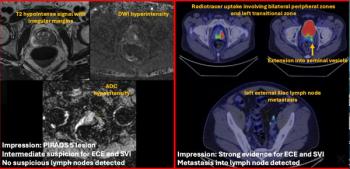
Survey: Over Half of Women in Their 40s Did Not Have a Mammogram in the Past Year
In a recent survey of nearly 2,000 women in their 40s who had no history of breast cancer, researchers found that over 38 percent of survey respondents said they had no reason to get a mammogram or had never thought about it.
Despite recommendations from the American College of Radiology (ACR) and the Society of Breast Imaging (SBI) for annual mammography screenings to begin at the age of 40, new survey findings reveal significant gaps in screening for breast cancer.
Drawing data from the 2018 National Health Interview Survey, researchers reviewed survey results on mammography screening from 1,948 women between the ages of 40 to 49 who had no history of breast cancer. According to the survey results,
The study authors noted that over 38 percent of the survey respondents indicated they had no reason to have a mammography exam or never thought about having a mammogram. Nearly 17 percent of respondents said they didn’t need a mammogram and 5.3 percent noted they were too young to have a mammogram, according to the survey.
“Our study indicates that women between the ages of 40-49 years may not be receiving adequate information to assess the benefits and harms of screening mammography, as advised by (guidelines from the United States Preventive Services Task Force (USPSTF)), and may require additional support in making informed decisions about routine screening,” wrote study co-author Randy C. Miles, M.D., M.P.H., an associate professor of radiology at the University of Colorado, and colleagues.
The study authors noted that the strongest factor associated with not having a mammogram was a lack of health-care insurance. Noting possible factors ranging from language and cultural modesty to provider biases and religious beliefs, Miles and colleagues also found that non-Hispanic Asian women were less likely to have had a screening mammography in comparison to White women.
The researchers suggested that shared decision-making (SDM), which enables clinicians to have a supportive, consensus-building dialogue with patients to facilitate decisions emphasizing the best evidence, could have an impact in these populations. Miles and colleagues noted these discussions could raise awareness about health-care knowledge and financial issues for disadvantaged women, and interventions that address potential cultural issues may help address screening rates among Asian women.
“Targeted interventions encouraging SDM that take cultural and family factors into account among Asian subgroups will be needed to increase screening engagement among this patient population,” added Miles and colleagues.
In regard to limitations of the retrospective study, the authors acknowledged the self-reported data may have led to overestimating of adherence with mammogram screening, They also noted the survey did not question the survey respondents on differences in breast cancer screening guidelines.
Newsletter
Stay at the forefront of radiology with the Diagnostic Imaging newsletter, delivering the latest news, clinical insights, and imaging advancements for today’s radiologists.




























